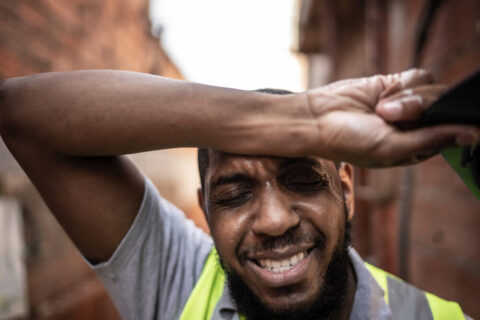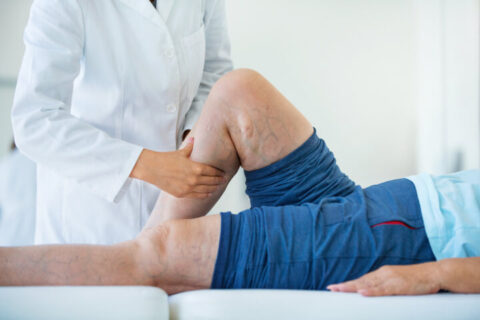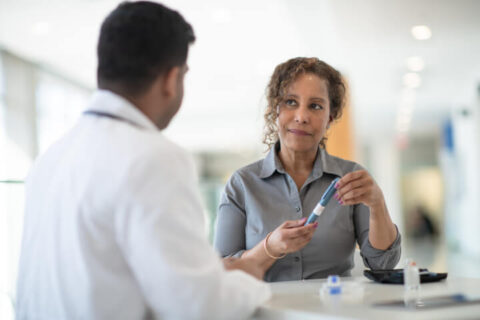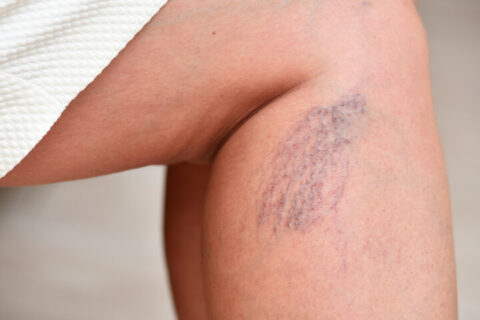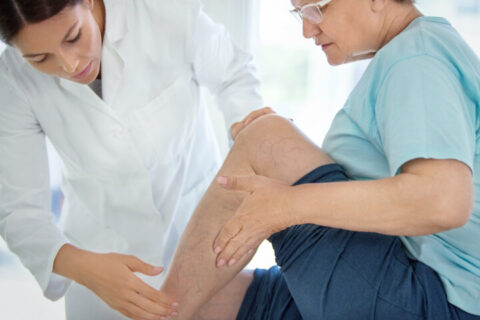Veins are compressible structures that return oxygen-depleted blood to the heart. There are various reasons for veins in your lower legs to look more visible. Vein illnesses manifest themselves in a number of ways. Varicose veins are the most well-known, but reticular veins are a comparable ailment that affects millions of individuals.
So what’s the difference between these two vein illnesses? These two differ in color, size, symptoms, and causes. Reticular veins are somewhat larger and straight vessels 1to 3 mm in diameter that are deeper into the skin (subdermal layer) and bluish in color. While varicose veins are very twisted) and palpable veins with a diameter of 4 mm or more. In this article, we go in-depth at what makes these two conditions differ and how they can be treated.
Read More: Facial Varicose Veins: What You Need to Know
Reticular Veins
Reticular veins are tiny, blue or green dilated veins that occur in places such as the legs and face and range in diameter from 1 mm to 3 mm. These frequent veins are often smaller than varicose veins but larger than spider veins, with a flatter and less twisted appearance. When reticular veins connect to spider veins (another vein illness), they’re referred to as “feeder veins.”
Retinal veins, like varicose and spider veins, are caused by weakened or broken vein valves. Blood might pool in the afflicted region, resulting in the appearance of dilated veins beneath the skin. Reticular veins are most commonly seen on the backs of your knees, inner thighs, or around your ankles.
While reticular veins may not often produce symptoms, their appearance might be an issue for some people. As a result, people may seek therapy to make the reticular veins less visible. Reticular veins are typically associated with symptoms such as local discomfort, burning, and itching.
Varicose Veins
Varicose veins are dilated veins with a diameter more than 3 mm that form beneath the skin. The veins typically appear to be purple or blue and can be found anywhere on the body, including the thighs, legs, ankles, and feet. Varicose veins can protrude above the skin’s surface.
The illness is quite common, particularly among women. Varicose veins affect around 25% of all individuals. Varicose veins most commonly develop in the lower legs.
Varicose veins, like spider and reticular veins, are caused by pooled blood that has grown stagnant owing to poor blood flow. The accumulated blood causes pressure and inflammation in the vein, which can cause hurting, discomfort, burning, and cramping.
What Causes These?
One-way valves in normal, healthy veins keep blood flowing toward the heart. However, when the valves in the superficial veins of the legs and feet fail, blood can pool in the lower extremities.
The pooling of blood causes internal swelling and pressure, which can be seen as larger blue, red, or flesh-colored veins visible through the skin. If not treated appropriately, this can progress to additional changes in the texture of the skin and, eventually, leg ulcers.
These veins are mostly produced by numerous layers of vein wall weakening, leading in vein extension and dilatation, followed by valve dysfunction and venous reflux (backward blood flow). Valves are tiny tissue folds inside veins that enable blood to flow just one way (from the feet back up into the heart).
The primary risk factors for vein wall weakening and valve malfunction are genetic (family history) and age. Trauma, infection, and blood clots can all cause damage to the vein wall and venous valves, resulting in reduced valve function and reflux.
In certain cases, venous hypertension (increased blood pressure inside the vein) can be caused or contributed to by high resistance to normal blood flow caused by obstructions inside (e.g., blood clots) or outside the veins (e.g., tumors, crossed blood arteries).
Calf muscle pump failure caused by limited ankle mobility and/or muscular atrophy (muscle wasting) can result in stasis (blood flow halt or slowing), reflux, and venous hypertension. Obesity, chronic lung illness, prostate difficulties, constipation, and occupations that require extended sitting and/or standing all lead to venous reflux and venous hypertension.
Learn More: What Is a Healthy Diet for Varicose Veins?
What Happens If These Aren’t Treated
Approximately 60% of individuals with chronic venous illness will see their condition worsen in the future. More than 30% of individuals with just varicose veins will have skin abnormalities, putting them at a higher risk for ulcers. Venous leg ulcers affect over 20% of individuals with chronic venous insufficiency. Within 10 years, almost half of all cured venous leg ulcers may recur.
At 5 years, it’s estimated that 50% of individuals with chronic venous illness in only one leg may acquire symptoms and venous reflux in the second previously symptom-free leg. Varicose vein patients are more likely to develop blood clots in the superficial and deep veins, bleeding, persistent limb swelling and discomfort, irreversible skin discoloration and scarring, and lymphedema (a non-curable condition characterize for a build-up of lymph fluid in the fatty tissues just under the skin).
Treating Reticular and Varicose Veins
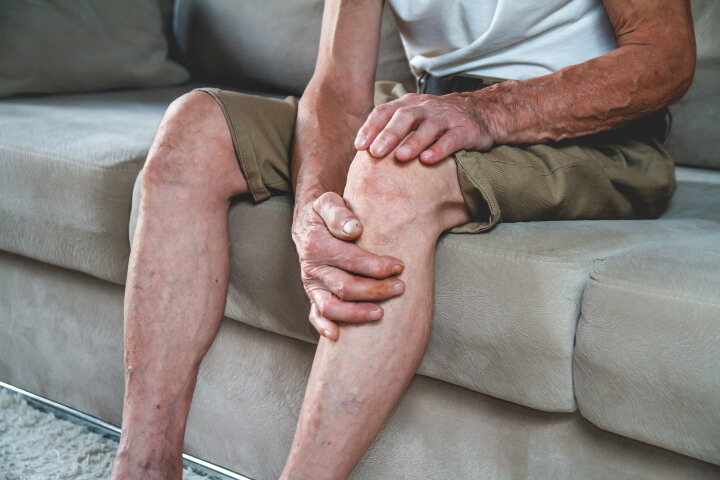
The appearance and symptoms of reticular veins and varicose veins are substantially reduced by treatment. Sclerotherapy is the preferred treatment for reticular and tiny varicose veins. Sclerotherapy involves injecting a sclerosant, a chemical that irritates the interior of the damaged vein. As the treated tissue breaks apart, the treated vein seals shut, and blood is routed through neighboring veins.
Laser treatments are frequently recommended by vein physicians to relieve the symptoms of reticular veins and varicose veins. Laser treatments irritate and shut the diseased vein by utilizing the strength of light radiation.
1) Endovenous Laser Treatment
A common laser treatment is endovenous laser treatment (EVLT). Under this procedure, a local anesthetic is administered, then a tiny laser fiber is introduced into the targeted vein in the leg, heating and disrupting the vein walls and redirecting blood flow to the neighboring veins. The damaged vein is then absorbed by the body, resulting in instant symptom alleviation. If your provider says EVLT isn’t a viable option for you, you can choose from other treatments like radiofrequency ablation, VenaSeal and ambulatory phlebectomy, among others.
2) Radiofrequency Ablation
Radiofrequency ablation is a quick and minimally invasive process. In this procedure, radiation is utilized to produce heat, which shuts the vein and reduces the appearance of varicose veins.
3) Sclerotherapy/Ambulatory Phlebectomy
Sclerotherapy is a medical treatment that addresses how to fade visible veins on the skin where a solution is injected into a vein directly. This then makes the blood vessel linings swollen and eventually come together. It later on turns into scar tissue and slowly fades until you can’t see it anymore.
When veins are too big for sclerotherapy, ambulatory phlebectomy is utilized. This outpatient treatment uses local anesthetic to extract leg veins through microscopic punctures in the skin.
4) VenaSeal
VenaSeal is an FDA-approved treatment for treating varicose veins. A catheter is placed into the afflicted vein, and cyanoacrylate, a medical glue, is administered, causing the vein’s walls to adhere together and seal it up. The blood flow is then redirected by the body.
5) Compression Therapy
Compression therapy is another popular (and non-invasive and non-surgical) treatment option. Wearing special compression socks or stockings may be recommended by your doctor. These apply enough pressure to your legs to allow blood to flow more freely to your heart. They also help to reduce edema. The degree of compression varies, but most varieties of compression stockings may be found at drugstores or medical supply stores.
Before deciding on a treatment approach, you should always consult with your doctor about your options and the dangers. The procedure recommended will be determined by your symptoms, as well as the size and location of the afflicted vein.
Seek Cosmetic Vein Treatments at The Vein Center Doctor
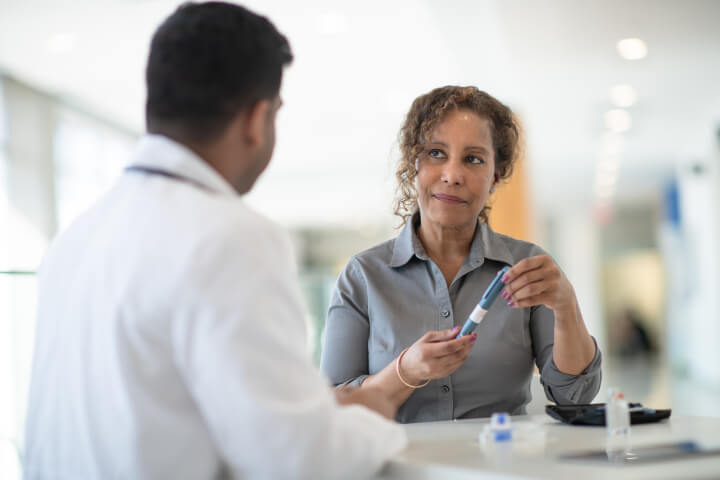
Varicose and reticular veins can be a nuisance. Fortunately, there are treatments available for these conditions. It’s best to consult with trusted providers so you can get back your smooth, clear, and vein-free skin.
At the Vein Center Doctor, we help patients restore their confidence in the face of veins and aches. The Vein Center Doctor is a full-service vein treatment center with convenient locations in New York and New Jersey. Our clinics provide outpatient vein therapy services, from diagnosis to follow-up care, with a high rate of success. We provide a variety of minimally invasive and non-invasive procedures using the most advanced vein and blood artery therapy technologies. Get in touch with us today.


